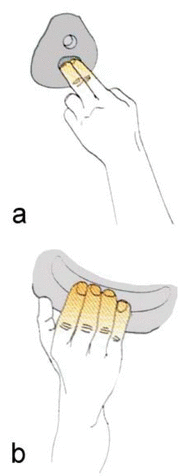The Effect of Physical and Mental Stress on the Heart Rate, Cortisol and Lactate Concentrations in Rock Climbers
- PMID: 30687424
- PMCID: PMC6341950
- DOI: 10.2478/hukin-2018-0024
The Effect of Physical and Mental Stress on the Heart Rate, Cortisol and Lactate Concentrations in Rock Climbers
Abstract
Rock climbing is a physical activity that not only causes an increase in muscle tension, heart rate and blood pressure, but also results in the elevation of stress hormones including cortisol. It has not been established which of the above mentioned variables serve as the most accurate indicator of rock climbing-induced physical and mental stress. The aim of this study was to evaluate the effect of physical activity, short-term fatigue and mental demand on heart rate (HR), salivary cortisol (C) and blood plasma lactate (LA) concentrations in rock climbers under laboratory conditions. Twelve male and female rock climbers of comparable climbing performance (5a - 6b OS) were recruited. The participants completed two routes of different climbing difficulty (effect of physical demand), repeated a difficult route with a short 5-min recovery period three times (effect of fatigue), and repeated a difficult lead climb (effect of mental demand). Heart rate as well as C and LA concentrations were determined. The results indicated that more difficult climbing routes elicited increases in HR (especially relative values) and LA concentrations, whereas fatigue accumulation had an effect on climbing HR and relative C concentration values. Lead climbing only caused an increase in climbing HR. Based on the results it was concluded that HR was a good indicator of physical and mental stress intensity. Performing the same difficult route three times with a short recovery period in-between turned out to be the most demanding task and resulted in the highest increase of the cortisol concentration. Dynamics of changes in lactate concentrations depend on muscle loading (local muscular effort), lactate clearance and technical/tactical skills of the climber.
Keywords: physiological response; rock climbing; workload intensity.
Figures





Similar articles
-
Acute changes in handgrip strength, endurance, and blood lactate with sustained sport rock climbing.J Sports Med Phys Fitness. 1996 Dec;36(4):255-60. J Sports Med Phys Fitness. 1996. PMID: 9062048
-
Metabolic response during sport rock climbing and the effects of active versus passive recovery.Int J Sports Med. 2000 Apr;21(3):185-90. doi: 10.1055/s-2000-302. Int J Sports Med. 2000. PMID: 10834350
-
Effect of an on-sight lead on the physiological and psychological responses to rock climbing.J Sports Sci Med. 2008 Dec 1;7(4):492-8. eCollection 2008. J Sports Sci Med. 2008. PMID: 24149956 Free PMC article.
-
The physiology of rock climbing.Sports Med. 2006;36(6):529-45. doi: 10.2165/00007256-200636060-00006. Sports Med. 2006. PMID: 16737345 Review.
-
Physiology of difficult rock climbing.Eur J Appl Physiol. 2004 Apr;91(4):361-72. doi: 10.1007/s00421-003-1036-7. Epub 2004 Feb 17. Eur J Appl Physiol. 2004. PMID: 14985990 Review.
Cited by
-
Salivary biomarkers of tactical athlete readiness: A systematic review.PLoS One. 2025 Apr 29;20(4):e0321223. doi: 10.1371/journal.pone.0321223. eCollection 2025. PLoS One. 2025. PMID: 40299918 Free PMC article.
-
Effects of Acute Psychological and Physiological Stress on Rock Climbers.J Clin Med. 2021 Oct 28;10(21):5013. doi: 10.3390/jcm10215013. J Clin Med. 2021. PMID: 34768532 Free PMC article.
-
MBboard: Validity and Reliability of a New Tool Developed to Evaluate Specific Strength in Rock Climbers.J Hum Kinet. 2021 Jul 28;79:5-13. doi: 10.2478/hukin-2021-0060. eCollection 2021 Jul. J Hum Kinet. 2021. PMID: 34400982 Free PMC article.
References
-
- Achten J, Jeukendrup AE. Heart Rate Monitoring. Applications and Limitations. Sports Med. 2003;33(7):517–538. - PubMed
-
- Bertuzzi RC, Franchini E, Kiss MA. Heart Rate and handgrip acute adjustments during the practice of the indoor rock climbing. Revista Mackenzie de Educacao Fisica w Esporte. 2004;3(3):99–106.
-
- Bertuzzi RC, Franchini E, Kokubun E, Kiss MA. Energy system contributions in indoor rock climbing. Eur J Appl Physiol. 2007;101(3):293–300. - PubMed
-
- Bourne R, Halaki M, Vanwanseele B, Clarke J. Measuring lifting forces in rock climbing: effect of hold size and fingertip structure. J Appl Biomech. 2011;27(1):40–46. - PubMed
LinkOut - more resources
Full Text Sources
